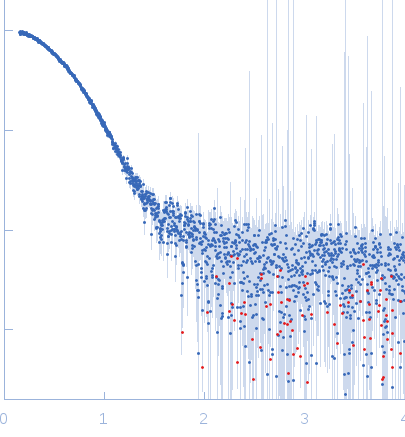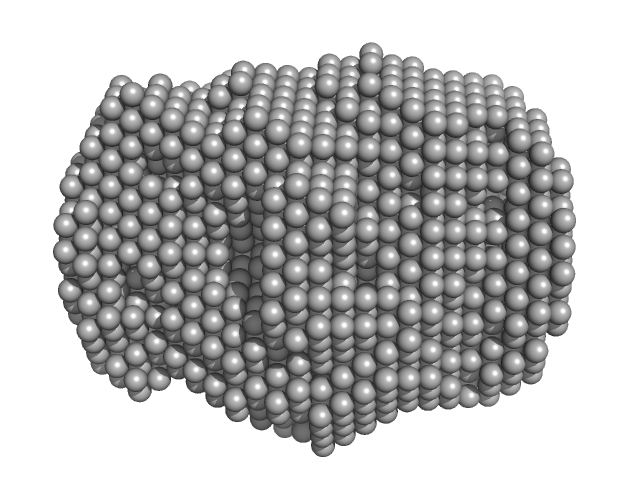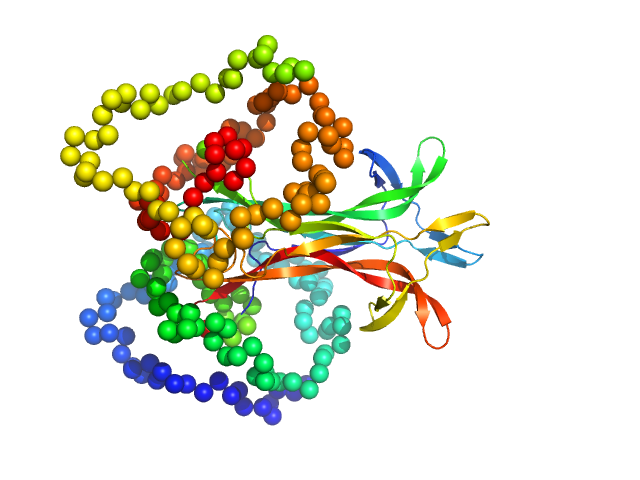| MWI(0) | 44 | kDa |
| MWexpected | 45 | kDa |
| VPorod | 92 | nm3 |
|
log I(s)
1.23×102
1.23×101
1.23×100
1.23×10-1
|
 s, nm-1
s, nm-1
|
|
|
|

|
|

|
|
Synchrotron SAXS
data from solutions of
ProNGF
in
50 mM Naphosphat 0.5 M Ammonium Sulfate(NH4)2SO4, pH 7
were collected
on the
EMBL X33 beam line
at the DORIS III, DESY storage ring
(Hamburg, Germany)
using a MAR 345 Image Plate detector
(I(s) vs s, where s = 4πsinθ/λ, and 2θ is the scattering angle).
One solute concentration of 3.00 mg/ml was measured
at 15°C.
Two successive
120 second frames were collected.
The data were normalized to the intensity of the transmitted beam and radially averaged; the scattering of the solvent-blank was subtracted.
Wavelength = UNKNOWN. Sample detector distance = UNKNOWN
Tags:
X33
|
|
|||||||||||||||||||||